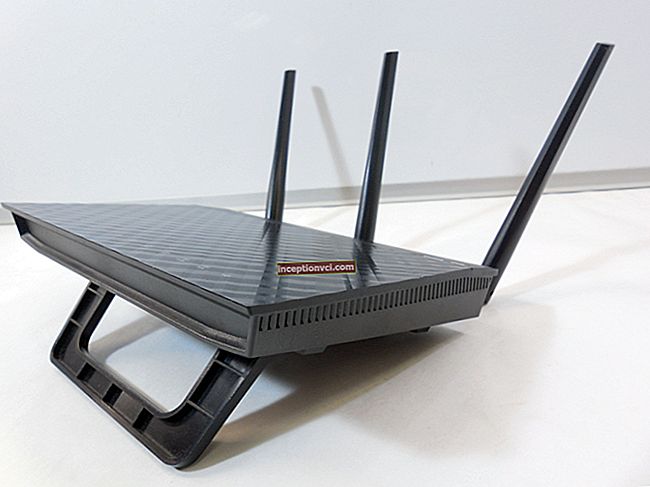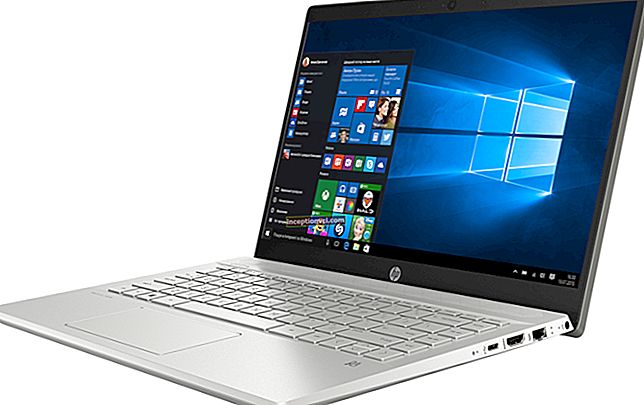The Gigabyte GA-Z87X-D3H motherboard has earned a reputation as an ideal overclocking option. In this product, the Taiwanese company implemented the concept of eliminating additional third-party controllers, which positively affected the final cost of the product, its reliability of operation and overclocking potential.
Section 1. Packing and packaging.

The mainboard "Gigabyte GA-Z87X-D3H" is packed in a box of a classic size for this class of solutions. The black color of the box, as well as of the product enclosed in it, according to the manufacturer, gave the product more solidity and status. The front side of the package shows the most "tasty" part of the motherboard from the point of view of marketers of the leading Taiwanese manufacturer. Here, the manufacturer has placed the name of the board and the logos of the technologies used, on which he decided to draw the attention of buyers. The most important characteristics are listed on the back of the packaging. There you can also see the image of the board, so as not to make a mistake when choosing.

Considering the very affordable price of the Gigabyte GA-Z87X-D3H motherboard, they decided not to overload its bundle with excesses and included only the necessary:
1) two SATA-III cables with metal latches for connecting SATA 6 Gb / s devices with two straight connectors;
2) two SATA-III cables with metal latches for connecting SATA 6 Gb / s devices with two L-shaped connectors;
3) a special plug for the back panel (I / O Shield);
4) a flexible bridge for combining video cards in the "NVIDIA SLI" mode;
5) user manual, including in Russian;
6) brief instructions for assembling a computer, including in Russian;
7) a disc with proprietary software and drivers;
8) a sticker on the system unit with the Gigabyte company logo.
For the overwhelming majority of users, this set will be quite enough.
Section 2. Appearance and design.

The motherboard "Gigabyte GA-Z87X-D3H" is created in the form factor of the "ATX" standard and has a size of 305x244 mm. It is based on the eighth series chipset developed by Intel Corporation and uses the well-proven Intel Z87 controller. The Taiwanese manufacturer's engineers have made the necessary additions to match the product's proprietary Ultra Durable 5 Plus technology. To this end, two third-party hubs were introduced into the motherboard, increasing the number of high-speed USB 3.0 ports to ten, which was reflected in the list of proprietary technologies under the name “Ultra USB3 +”. Another proprietary technology is known as "Ultra Cool". To implement it, the developer applied a new design of radiators with high cooling efficiency, which resulted in low heating of the key components of the system. At the same time, they used ordinary radiators, and not heat pipes as on the Gigabyte G1.SNIPER-M5 model, which is very popular among domestic gamers. There are no miniature fans here either, as on a special model for extreme overclocking Gigabyte GA-Z87X-OC-Force, designed to set world records in this exercise. The proprietary technology “Ultra Performance” provides for the use of PWM-controllers and voltage regulators “PowIRstage” manufactured by “International Recifier” in digital power converters. "Ultra Safe" technology is designed to take care of the reliability of the motherboard, and "DualBIOS" - to restore the main "BIOS" chip in the event of an unsuccessful update by the user or a virus attack. It does this by copying the content from the backup chip to the main one. The complex of proprietary technologies "Ultra Durable 5 Plus" from the Taiwanese company "Gigabyte" also includes the use of solid capacitors and copper conductors of double thickness, which will positively affect the durability and reliability of the product. It also includes protection against moisture ingress, which is important when operating in the winter or using air humidifiers. Built-in lightning and AC power protection keeps your computer safe in adverse weather conditions or power problems.Moreover, the filter used for this purpose is quite powerful, so from now on you can not be afraid at all for a turned on PC if you are not at home. All components of the motherboard are reliably protected from electrostatic discharge and high temperatures.
The manufacturer decided to brighten up the gloomy look from the implementation of the Gigabyte GA-Z87X-D3H board in a black PCB with eye-catching gray-blue heatsinks, but the result was not very convincing. At the same time, the radiators very effectively remove heat from the cooled components due to a rather tight screw connection. The manufacturer also increased the dissipative area of the radiators in order to eliminate the problem of their high heating, inherent in many models of previous generations.
Four slots are designed for DDR3 standard RAM with support for modules with a frequency of up to 2933 MHz and a voltage of 1.5 V. quite enough for everyday use. However, motherboards from Gigabyte, belonging to the rival AMD camp, support a total capacity of 64 GB, which is twice as much. Moreover, regardless of whether we are talking about inexpensive models represented by Gigabyte GA-F2A55-DS3, implemented on the junior AMD A55 chipset or more prestigious ones - in the person of Gigabyte GA-F2A85XM-HD3 on the senior AMD A85X chipset. The motherboard "Gigabyte GA-Z87X-D3H" allows you to connect six devices to SATA 6 Gb / s connectors. All of them are implemented using a built-in set of logic, which will not cause problems during operation, and will also provide a slightly higher data transfer rate in comparison with third-party controllers. Two PCI Express 3.0 x16 slots equally share 16 PCI Express processor lanes if two video accelerators are installed in NVIDIA SLI or AMD CrossFireX modes. Another slot "PCI Express 2.0 x16" operates at "x4" speed. It should be remembered that if you enable it, the operation of the three PCI Express 2.0 x1 slots will become impossible, since all the lines of the built-in logic set will be occupied. All PCI Express x16 slots are equipped with very convenient mounting feet. There is also a PCI slot, which is still needed by individual users. And the manufacturer is honored that he does not forget about their needs.

Two “Renesas uPD720210” hubs helped to bring the number of high-speed USB 3.0 ports to ten, which does not impose any restrictions on their functioning and does not imply the installation of drivers. All high-speed USB 3.0 ports will function as reliably as if they were based solely on the built-in chipset. Six high-speed USB 3.0 ports are brought out to the rear panel, and the remaining four are implemented by two internal connectors. There are also two USB 2.0 ports on the rear panel, which are distinguished by their black color from the high-speed USB 3.0 ports realized in blue. Four more USB 2.0 ports can be connected to two internal connectors on the board itself. The Gigabyte GA-Z87X-D3H board is equipped with D-Sub, DVI-D and HDMI video outputs. I recommend connecting the monitor via the “DVI-D” port, as this is the simplest and most convenient, as well as the least problematic option. The universal PS / 2 connector on the back of the motherboard is used to connect a mouse or keyboard. It is a pity that you cannot connect both of these devices at the same time, since sometimes situations arise that require such a possibility. Five fans can be connected directly to the "Gigabyte GA-Z87X-D3H" motherboard, and all of them are implemented according to a four-pin circuit. Moreover, the linkers provide two connectors for connecting processor fans at once. This is very convenient for those users who use two fans at the same time in the processor cooling system or have purchased a liquid cooling system where a fan and a pump are connected.Both of these connectors are able to control the rotation speed of even those fans that have only three pins. This gives this motherboard an additional advantage in the eyes of those potential buyers who really need a function so rarely implemented by manufacturers today. Eight-channel "High Definition Audio" sound is implemented on the basis of the "Realtek ALC892" codec. Music lovers should not expect anything super-outstanding from this built-in solution, but ordinary users will be quite satisfied with the level of sound they produce. An optical S / PDIF connector and five analog audio connectors are brought out to the rear wall of the motherboard, which should suit the overwhelming majority of buyers. The built-in Intel WGI217V gigabit network controller is capable of working with 10, 100 and 1000 Mbps networks. On a separate line, mention should be made of the use by the manufacturer of gold-plated contacts for the processor socket. This is guaranteed to protect them from corrosion, as well as provide greater reliability of the connection. And although the effect of such an innovation will be rather ephemeral, the very presence of gilding will already raise the prestige of the purchased product in the eyes of the user, his friends and colleagues.
Section 3. Testing.
Mounting the Gigabyte GA-Z87X-D3H motherboard is easy, and therefore the whole process took a few minutes. The arrangement of the elements is well thought out, so nothing interferes with the operation. The system starts confidently, showing on the monitor a long-familiar picture with a reminder of hotkeys. To enter the "BIOS" use the "Del" key. Pressing "F9" displays a window with important system information. The "F12" command opens a menu for selecting the priority load source. And the "End" key will launch the firmware update utility called "Q-Flash".

The Gigabyte GA-Z87X-D3H motherboard is equipped with a new version of the UEFI BIOS. Therefore, immediately after pressing the "Del" key, a pleasant to the eye three-dimensional image opens, where the central part is occupied by a "wide-open window" in which the user can set the necessary parameters. The sashes of the window, open up, down and to the sides, are full of additional information. There is even a creeping line with tips and a list of "hot keys". In the “Gigabyte GA-Z87X-D3H” model, the user has access to the “UEFI BIOS” appearance setting, which is very convenient and looks attractive. But if someone is not satisfied with such innovations, you can always get the familiar look of the classic “BIOS” by pressing the “F2” key, familiar from the previous generations of motherboards manufactured by “Gigabyte”. After all, the basis of the "BIOS" has remained the same. The changes did not affect either the section names or the location of the parameters. As for the innovations, I did not like the default starry clouds background, since the white characters on it are hard to read, but this will not become an insoluble problem, since it can be immediately replaced with a darker version. If you do not need additional information displayed on the open doors, then you just need to reduce the screen resolution. All sashes will immediately hide, only the window itself will remain, where, as before, it will be possible to change the necessary parameters. This option is more convenient for work and is preferable for overclocking enthusiasts who are focused on achieving maximum results.

By default, "BIOS" sends the user to the "Home" section on the "Performance" tab. Here you can change parameters that are quite important for overclocking, for example, the frequency and voltage of the processor or RAM. If you are not satisfied with this basic set of functions, then in the new “UEFI BIOS” the company “Gigabyte” has provided for the function of its significant expansion, for which it is enough to press the “Setup” button and use the “Select Your Own Options” function to add the necessary or remove unnecessary parameters ... At the same time, the removed parameters do not disappear anywhere, so they can be returned at any time convenient for the user.But if the initially presented option does not suit the user at all, then there is no need to spend precious time editing the option presented by default, but immediately turn to another innovation. Its essence lies in the ability to create your own versions of the "BIOS", save them, and then switch between them with one click as needed. For example, you can set separate acceleration settings for extremely hot summers and cooler periods. You can also edit the "Shortcuts" list of the sections and parameters most frequently used by users by enabling the "Enable Shortcuts Editing" option. In the future, while in any of the sections, it will be possible to right-click on the screen and display this list, and then change the parameters located in it.

The "Frequency" tab is analogous to the "Advanced Frequency Settings" from the classic "BIOS". Among the new options, the most interesting are "CPU Upgrade" and "Performance Boost", intended for automatic overclocking of the processor and the entire system. Moreover, the values can now be selected from the drop-down list, and entered using the keyboard, as well as set with a special slider using a computer mouse. The "Advanced CPU Core Features" page allows you to fine-tune various modes of processor operation, ranging from the multiplication factor to the power saving mode. An innovation is the "K OC" parameter, aimed at more convenient overclocking of processors belonging to the "K" series with an unlocked multiplier. The "Memory" tab replaces "Advanced Memory Settings" from the classic "BIOS" and has an almost identical set of parameters. Added only the "Memory Upgrade" option for automatic overclocking of RAM. It is quite convenient to select a profile with the values of frequencies, timings and voltages of the RAM with one click of the computer mouse, in strict accordance with the parameters set by the manufacturer for each specific model. You can also use their manual setting. This feature is more suitable for extreme overclocking, as it allows you to find the most productive combination of parameters. At the same time, the possibilities for managing the parameters of the RAM are so extensive that they are placed on separate pages. By the way, timings can be set simultaneously for two channels or for each separately. And you can change only really important parameters, leaving irrelevant ones at the discretion of the motherboard. The "Voltage" tab has replaced the previous "Advanced Voltage Settings" section from the standard "BIOS". It allows the user to take full control of the voltage control of various system elements. Moreover, the list of parameters was so extensive that it had to be split into several pages. The "3D Power Control" page appeared thanks to the proprietary technology "3D Power". Directly from the "BIOS" the user can set the operating mode of the digital converter of the processor power supply and adjust many other parameters. Various parameters of the voltage itself supplied to the processor in various modes can be changed on the "CPU Core Voltage Control" page. It is really hard to fix it at the level required by the user, or set a certain value in the "Offset" mode. Pages titled "Chipset Voltage Control" and "DRAM Voltage Control" change the voltage for the chipset and memory, respectively. To support the processor's operation at frequencies lower than the standard for this model, as well as the functioning of low-voltage RAM modules, the manufacturer provides the ability to change the voltage not only upwards, but also downwards relative to the standard indicator. The "PC Health Status" tab allows you to receive warnings about opening the case of the system unit, about exceeding the permissible values of temperature indicators, as well as about stopped fans.If there are two processor fans at once, for example, in the case of a tower cooler, then their speed will be adjusted synchronously. You can select the preset mode "Normal" or "Silent", or you can manually set the necessary parameters. The mainboard "Gigabyte GA-Z87X-D3H" is also endowed with the function of adjusting the rotation speed of the processor fans with a three-pin connection. Its advantages include the ability of all, without exception, connectors to regulate the speed of three-pin fans. In many other models, only one system connector is capable of this. But the section "PC Health Status", although it has the same name with a similar section from the classic "BIOS", contains only control parameters. Informational parameters from it migrated to the main page of the new version of "UEFI BIOS", which is very reminiscent of a wide-open "window with shutters", on which from now on all the reference information has been placed. If the user hid them, but then changed his mind, then it will not be difficult to return these "doors" with information. This can be done by simply increasing the resolution, after which they will be constantly in the user's field of vision. Therefore, the developers of the new version of the UEFI BIOS considered it unnecessary to duplicate information parameters in the "PC Health Status" section. But if the user decides to abandon these "sash windows" with information parameters, then the information contained in them will be reflected in additional tabs. The "CPU Status" tab will display the necessary information about the processor. With its help, the consumer learns about its frequency, multiplication factor, voltage, temperature, as well as the fan speed. The "Memory Status" tab will do the same for RAM.

The "System" section will allow the user to set the date and time, select the interface language, password, change the resolution or return to the classic view. This section also contains settings for the appearance of the "BIOS". The Working Environment feature helps you choose between new and classic looks. The "Start-up Page" function makes any "BIOS" page the start page. Moreover, it can be a page you created, saved to your profile. The Background Wallpaper function changes the starting background, and Display Policy controls the starting resolution.

The BIOS Features section contains system startup options. With its assistance, you can turn off the display of the image at startup or customize the download process.

The Peripherals section is responsible for the operation of various peripherals.

In the "Power Management" section, we have collected a set of tools for managing the processes of starting the motherboard and its power supply.

"Save & Exit" provides users with the ability to save the changes made or go to the default settings, as well as work with the "BIOS" settings profiles. The user can load or save eight different profiles of settings, and each can be given its own name. Profiles can be loaded from external media or saved to them. In case of successful completion of the starting procedure, the motherboard "Gigabyte GA-Z87X-D3H" automatically saves the current set of settings and remembers the number of successful starts on it. In the future, the user will be able to return to them even if he did not save these profiles on purpose, and the statistics of successful starts will help him choose the most successful option.

To update the firmware, use the "Q-Flash" function, which can also be launched using the hotkey "F8". Now it has become much more convenient in work, and also provides the user with information about the used and new versions of "BIOS". There is also a completely new function that allows you to easily flash a motherboard directly via the Internet in a fully automatic mode. Users no longer need to download new BIOS versions from there and place them on USB sticks.Users who initially decided to abandon the scrolling line with a list of prompts and "hot keys", if such a need arises, can call up their full list at any time by pressing the "F1" key. Or do it using the menu that appears when you click anywhere on the screen with the right mouse button. When you move the mouse cursor over any of the parameters, the bottom of the screen immediately displays contextual help on it. And if you select any parameter, then by pressing the "F1" key, the system will display detailed help information on it in a special pop-up window. At the same time, the manufacturer has completely retained the old time-tested system of function keys, familiar to many users. For example, to get detailed system information, as before, just press "F9".
For testing, we used an Intel Core i5-4670K processor with a nominal frequency of 3.4 GHz and four full cores. Unlike its elder brothers from the seventh series, this processor lacks Hyper-Threading technology, which doubles the number of executable threads. But the developers left him no less relevant "Intel Turbo Boost", which increases the frequency to 3.6 GHz with a full load of all four cores, to 3.7 GHz - three and 3.8 GHz - two or less.

During the overclocking process, we managed to raise its frequency to 4.5 GHz, which is a pretty decent result for a voltage level of 1,150 Volts. At the same time, the processor was very far from overheating, despite the air cooling using the budget Zalman CNPS10X Performa system, which does not pretend to record performance. The Intel Core i5-4670K processor came out quite cold, and it is able to maintain this quality even during overclocking. In addition, he also proved to be a rather economical option. Even being overclocked to 4.5 GHz, it continued to save the owner of electricity by switching to more economical modes, instantly reducing the multiplication factor from "45x" to "8x" in the event of a decrease in load.

The ability to instantly jump from 4.5 GHz to 0.8 GHz makes an overclocked Intel Core i5-4670K processor as energy efficient as running at its nominal frequency. At the same time, the voltage level dropped to the level of 0.708 Volts. The overclocked version of the processor successfully passed the load tests and felt great even in the most severe modes. Under an extremely high load, the CPU warmed up a little more, but it was still very far from the critical temperature values. Thus, users are unlikely to achieve overheating of the Intel Core i5-4670K, which sharply distinguishes it from competitors from the AMD production line. Intel really did have an excellent processor, capable of operating stably even with not the most powerful cooling system in overclocking under extreme load.
Section 4. Conclusions.
For a long time, consumers have been expecting from Gigabyte an adequate mode of automatic overclocking of the processor and memory. But what they got is beyond praise. The new mode is especially liked by inexperienced users who can overclock without bothering with incomprehensible terms and characteristics. The system will do everything by itself, you just need to select the appropriate profile from the list of options. Also, the model under consideration will allow you to create six own options for the layout of the "UEFI BIOS", which is generally not capable of any of the competing solutions. From now on, "BIOS" will look the way the user wants. And it will contain only those functions that are convenient for a particular owner. Now any page or section can be easily made start, as well as in "one click" to change the background and screen resolution. There is a convenient hint system. But with all this variety of innovations, mastering the new "UEFI BIOS" is not required, since its structure has remained unchanged. The names of the sections and the arrangement of elements in them remained the same. Only new functions have been added, and a new section "Home" has appeared.But if the user does not like the new appearance of the "UEFI BIOS", then there is always an opportunity to switch to its old version with one press of the "F2" key. In addition, the classic "UEFI BIOS" can be set as a startup one and the system will always load it by default. But, you see, there are few who want to abandon the splendor that is presented in a more modern version, and therefore it can be returned at any time convenient for the user.
The motherboard "Gigabyte GA-Z87X-D3H" has a wide range of options and a convenient system of settings, allowing you to achieve high efficiency. Therefore, comparing it with direct competitors in the market will clearly not be in their favor.
Benefits:
1. A complete set of fasteners on the right edge of the board, which does not allow it to break;
2. Very fast and convenient installation process;
3. Lack of additional controllers from third-party manufacturers;
4. The use of gold-plated contacts for the processor socket;
5. Possibility to connect five fans at once according to the scheme for four contacts;
6. All corresponding connectors can regulate the speed of three-pin fans;
7. Ability to synchronously adjust the speed for two processor fans at once;
8. Ability to connect up to 10 USB 3.0 devices and up to 6 SATA III (6 Gb / s) devices;
9. Two slots "PCI Express 3.0 x16" with support for "NVIDIA SLI" and "AMD CrossFireX";
10. The presence of an outdated, but still in demand "PCI" slot;
11. There are all the necessary video outputs of the standards "D-Sub", "DVI-D" and "HDMI";
12. Design of radiators with high cooling efficiency;
13. Low heating of key components of the system;
14. Perfectly thought out and perfectly realized three-dimensional version of "UEFI BIOS";
15. Wide possibilities of setting "UEFI BIOS" with an extensive system of profiles;
16. Allows you to create six custom options for the layout of the elements of the "UEFI BIOS";
17. Statistics of successful system starts are automatically kept for each set of settings;
18. Any page "BIOS" can be made start;
19. Due to the continuity of the names of the sections and the arrangement of elements in them, the three-dimensional version of the "UEFI BIOS" of this motherboard does not require mastering;
20. There is a function that allows you to quickly and easily flash the motherboard directly from the Internet in a fully automatic mode;
21. The ability to switch to the "BIOS" of the usual classic form by pressing one key;
22. Automatic recovery of "BIOS" in case of unsuccessful update or virus attack;
23. Protection against moisture, lightning, short circuits, overheating and electrostatic discharge;
24. Support for "DDR3" standard RAM with a frequency of up to 2933 MHz;
25. Excellent product reputation;
26. High quality workmanship;
27. High reliability of the element base;
28. High overclocking potential;
29. Maintaining the performance of all energy-saving technologies during overclocking;
30. Perfectly implemented mode of automatic overclocking of the processor and the entire system;
31. Convenient mode of automatic overclocking of RAM with profiles of frequencies, timings and voltages for each specific model of leading manufacturers;
32. Reasonable cost for such a perfect product.
Disadvantages:
1) Dull and faceless appearance of packaging and products;
2) Only one "PS / 2" connector on the back panel for connecting a mouse or keyboard.
Features:
I. The maximum amount of RAM is limited to 32 GB;
II. USB 3.0 ports are implemented using a hub, which does not imply the installation of drivers;
III. RAM timings can be set simultaneously for two channels or for each separately.









